
This combined bridge / vibrola tailpiece was fitted to solid body guitars made at the Matsumoku factory from at least as early as 1966 (possibly earlier), and through to about 1974. It was also available as an aftermarket part. Although fitted to guitars from numerous brands, most of these were derivatives of the same three mid-sixties models, the Aria 1532T, 1802T and 1832T. The best known by far was the Epiphone 1802T / ET-270. There were a few exceptions, the Epiphone ET-275 and ET-278 (1972) built on the success of the ET-270 and were more akin to the original 1960s Epiphone solid bodies, whilst the Domino Spartan was somewhere between the 1532T and the 1802T and is perhaps closer to a Stratocaster than anything the factory had built prior to making deliberate copies in the mid-1970s.
A full(ish) list of Matsumoku-made guitars fitted with this tailpiece is shown below:
| Aria model | Rebadged as |
|---|---|
| Aria 1532T* | Commodore N179, Conrad 40090, Crown Professional, Toledo 19021, Univox UC-2, UC-3 |
| Aria 1802T | Conrad, Domino Olympic D202, Dorado 5985, Electra 2263WC Sustainer, Eros 9525, Epiphone ET-270, Lyle 1802T, Toledo 18021 |
| Aria 1803T | Domino Olympic D203, Luxor 1803T |
| Aria 1832T | Conrad Bison 40065 / 40005, Tempo |
| Domino Spartan D302, D303 | |
| Epiphone ET-275, ET-278 |
*Actually the Aria 1532T used a similar tailpiece but with separate bridge - the rebadged versions listed were all fitted with the combined bridge / vibrola tailpiece.
List of Matsumoku bridges / tailpieces / tremolos
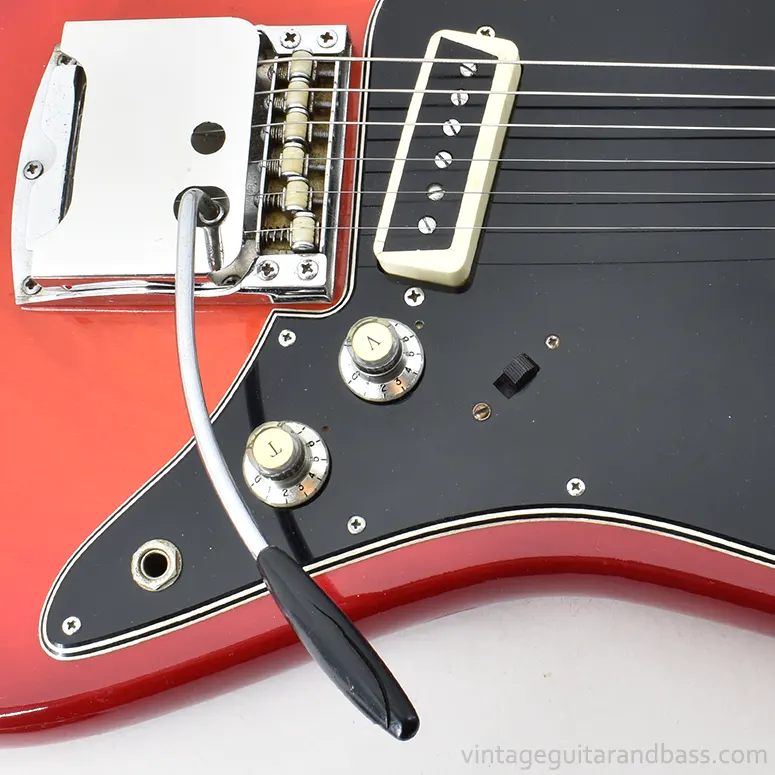
Matsumoku combined bridge / vibrola as fitted to a 1971 Epiphone 1802T. Note the original silver metal-capped control knobs and single coil 'trapezoid' pickups.
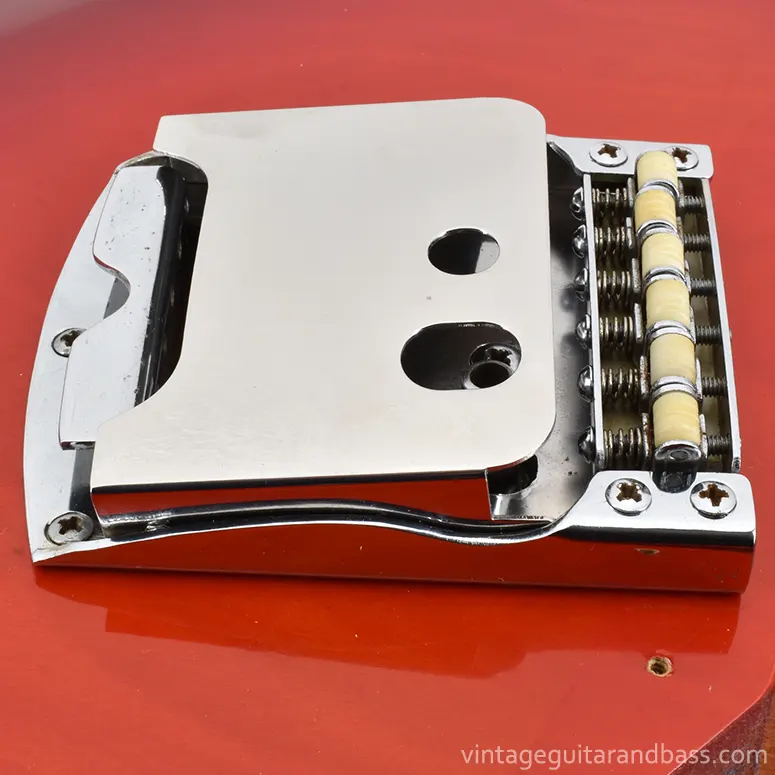
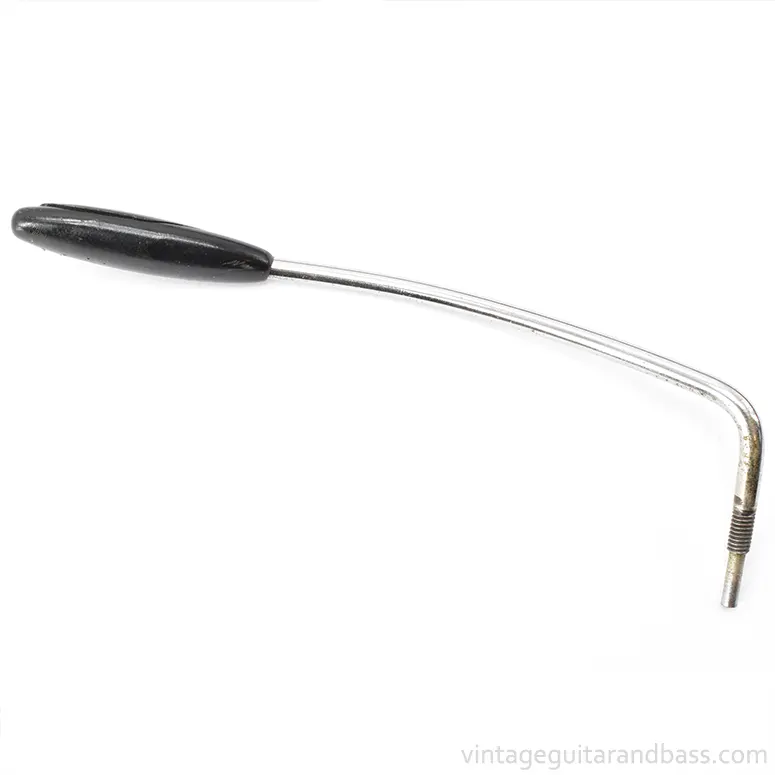
The vibrola arm simply unscrews. The thread is the pre-1967 Japanese metric M5 with a pitch of 0.9mm.
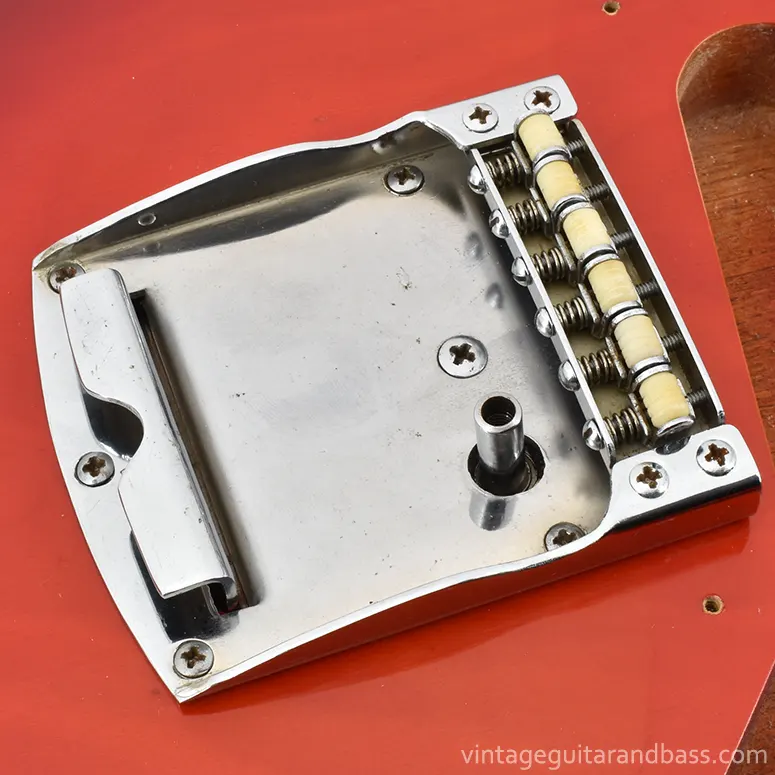
With cover and arm removed. The baseplate has dimensions 100.0mm x 86.6mm and is made from 2mm thick metal plate. It is mounted to body with 5 x 20mm oval crosshead screws.
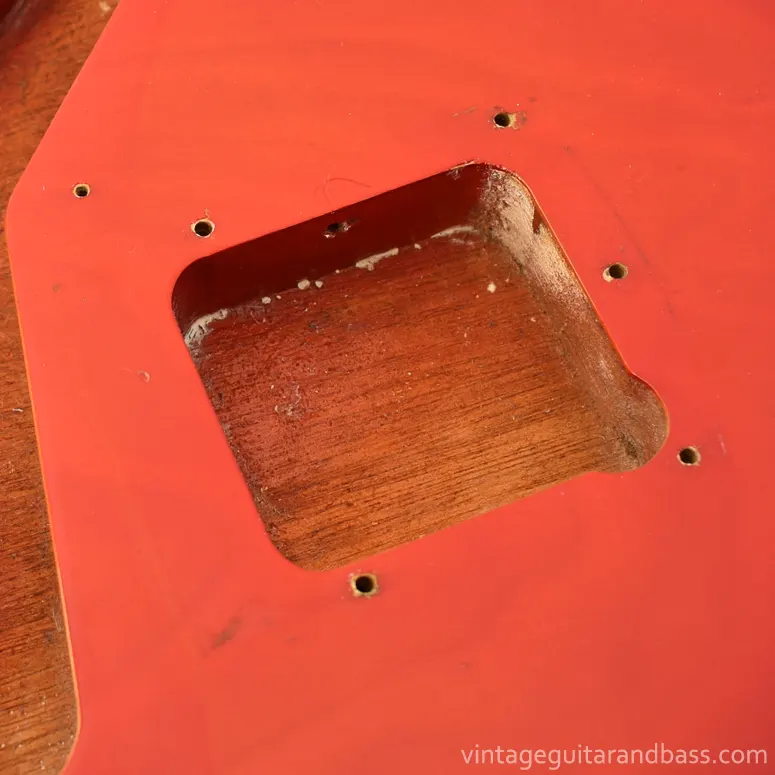
The recess routed into the body measures 69.2mm x 63.9mm x 27mm deep. Note the hole in the side wall to accommodate the earth wire from the control circuitry.
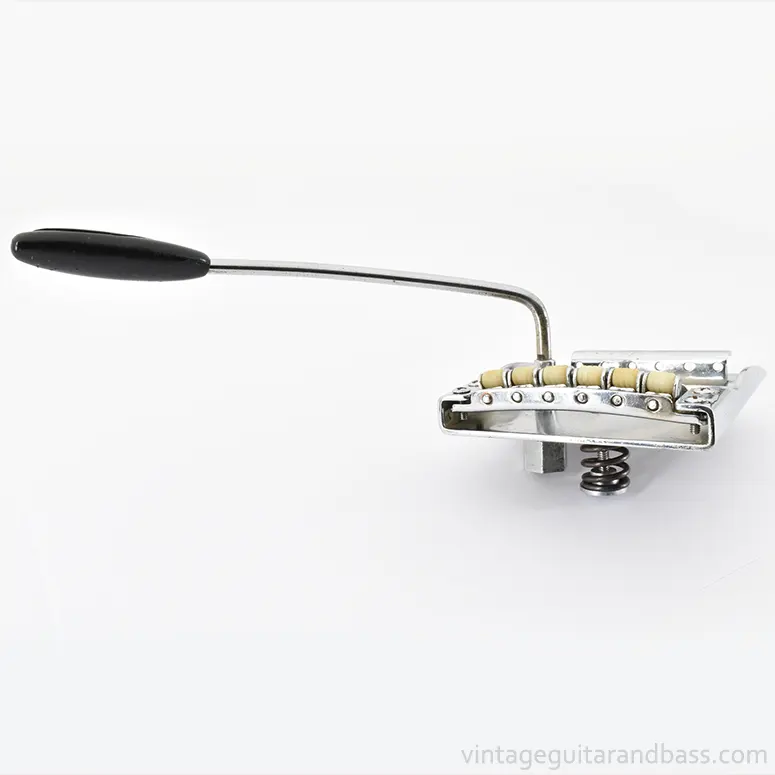
The complete vibrato unit removed from the guitar body.
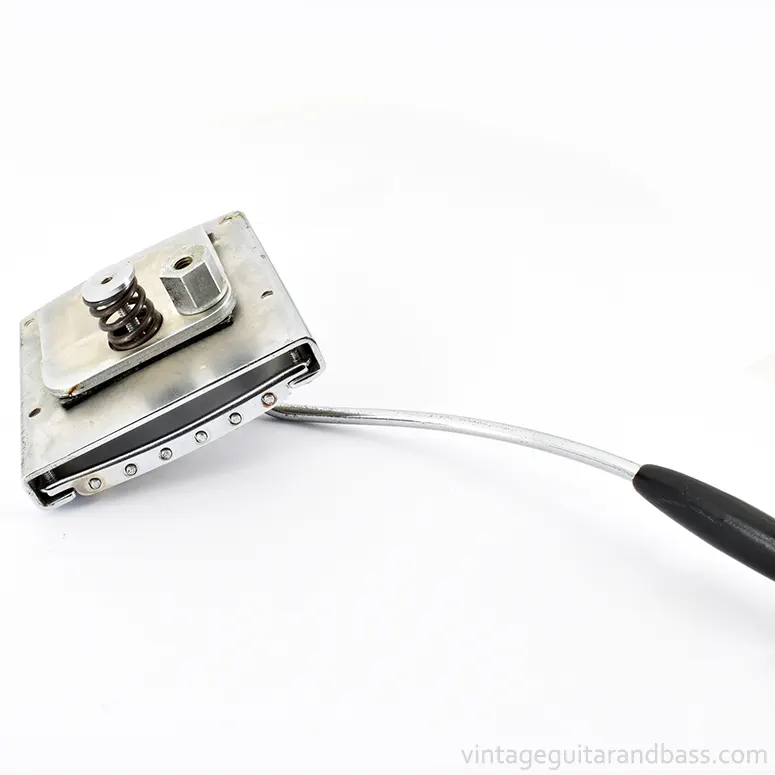
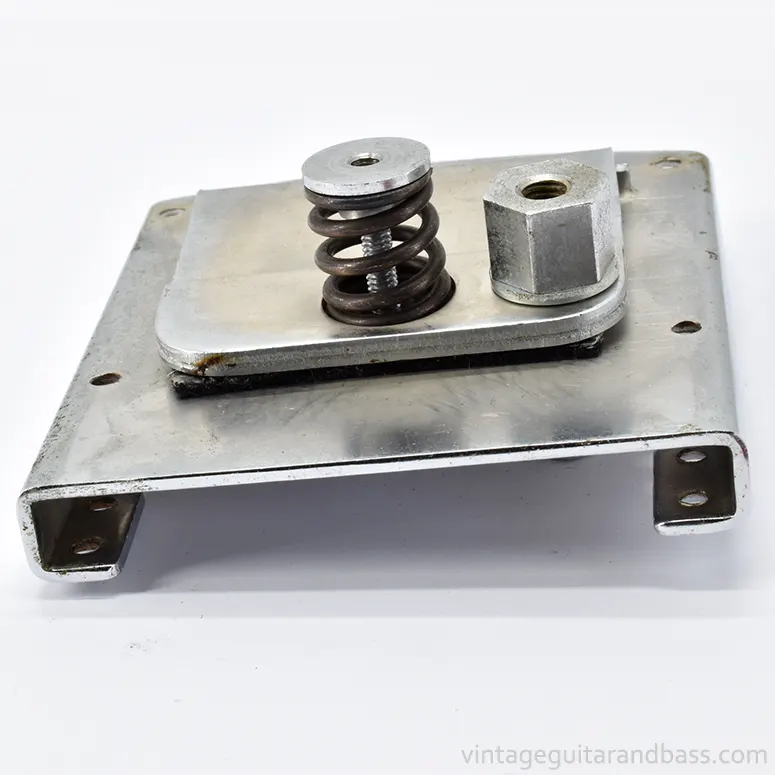
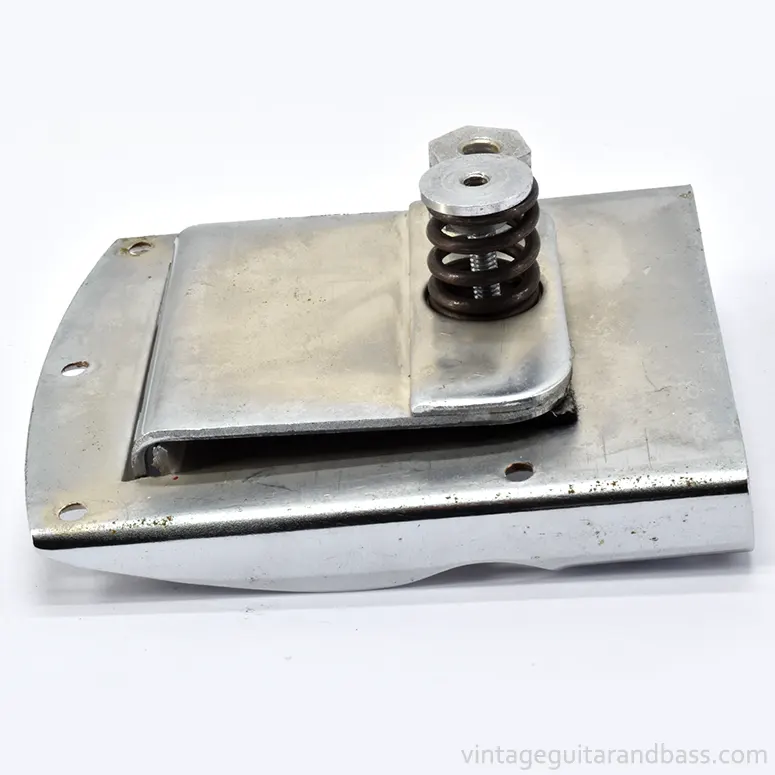
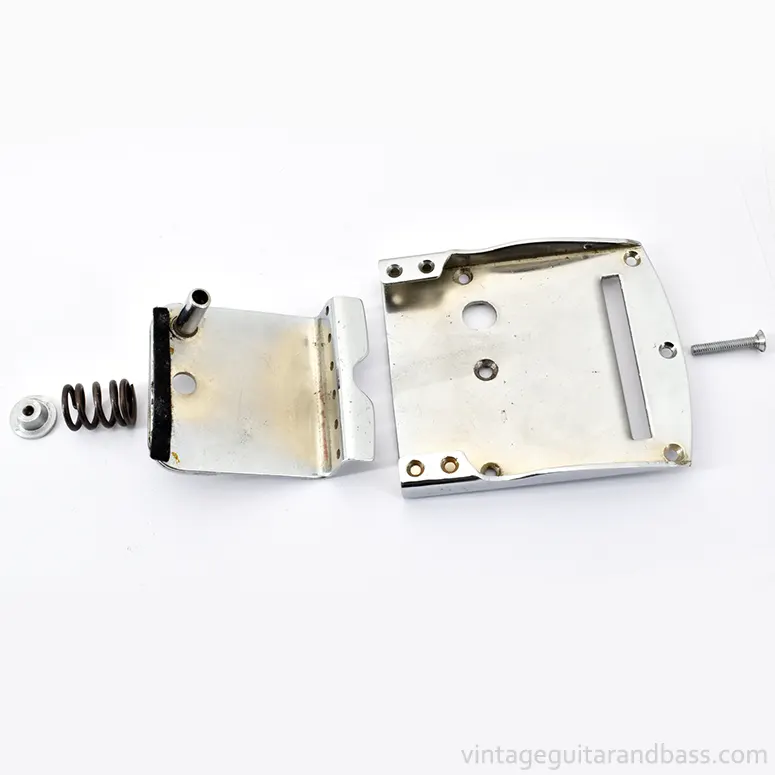
Dismantled view. The base section can be dismantled by removing the centre screw which passes through a hole in the underplate, through the spring, and into a threaded grommet. The different parts are shown here.
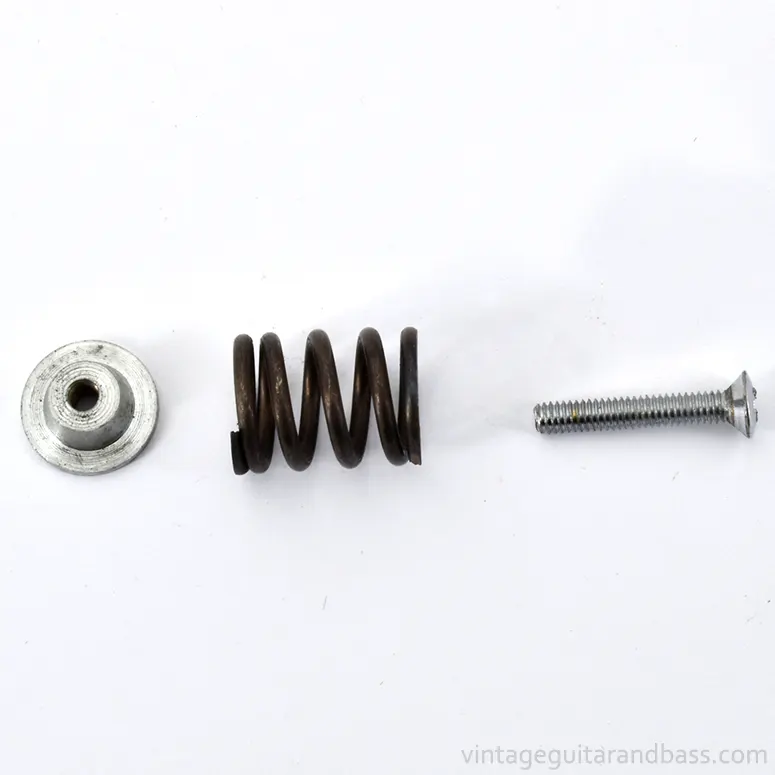
The spring is 16mm wide (outer diameter) and approximately 21mm tall. The bolt is a 25mm oval crosshead pre-1967 Japanese M4 (0.75mm pitch). Threaded grommet is 16.0mm in diameter and 6.6mm tall.
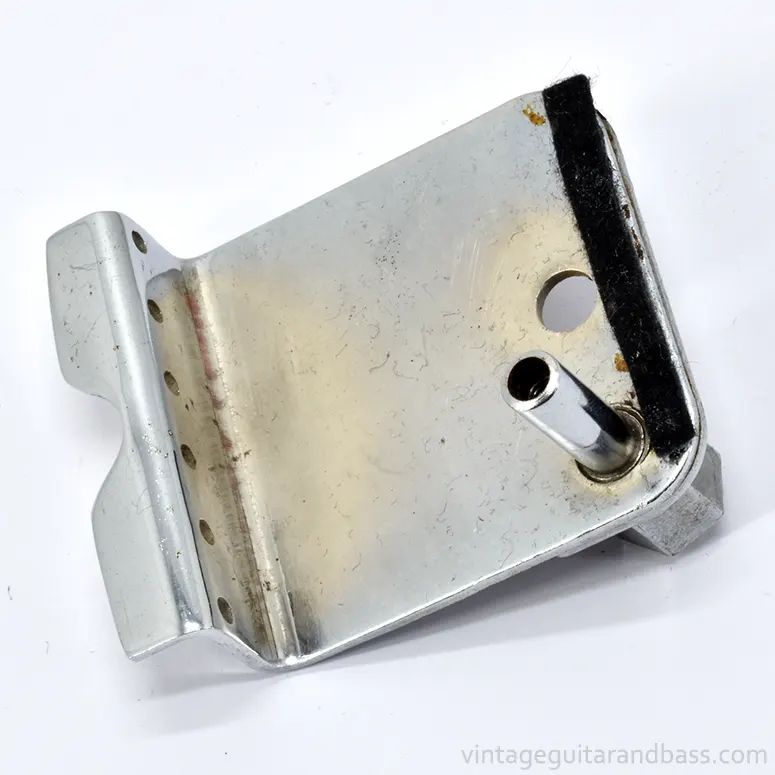
The underplate is 60mm x 60mm (71.5mm long including lip) and made from 2mm thick plate. There is a black felt strip glued along one edge, roughly cut: 52mm long, between 5-6mm wide and about 2.5-3mm thick.
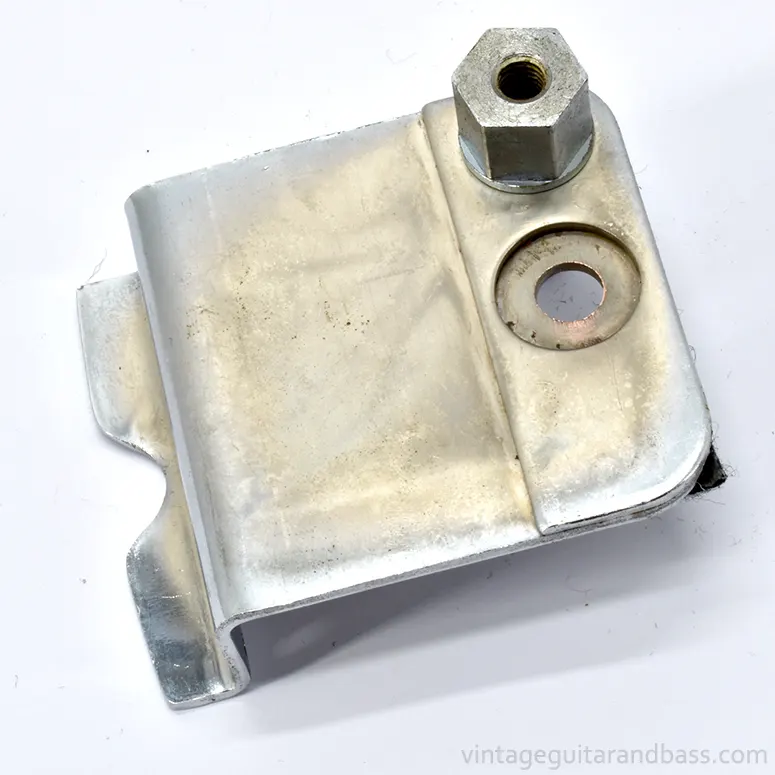
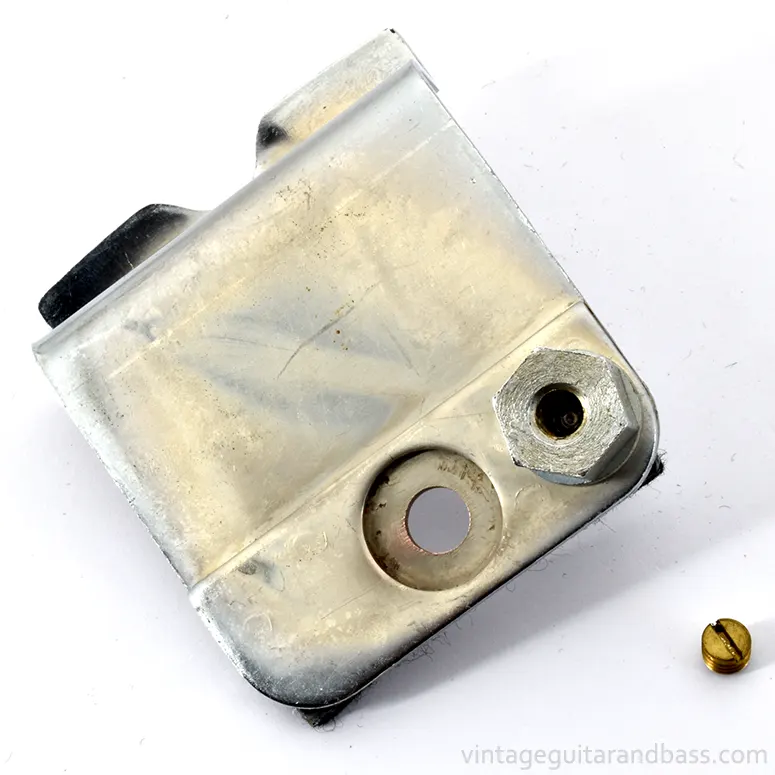
There is a large nut on bottom 11mm tall x 14mm. This is threaded and holds a 5mm M6 (standard ISO thread) slotted brass grub screw.
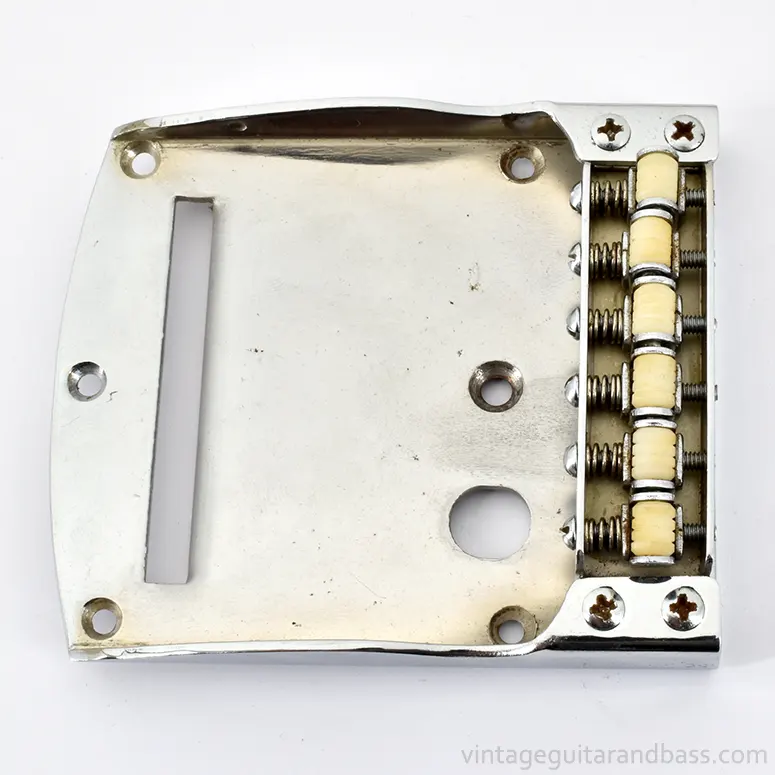
The baseplate with bridge attached. The bridge height can be adjusted (lowered) with the four mounting bolts.
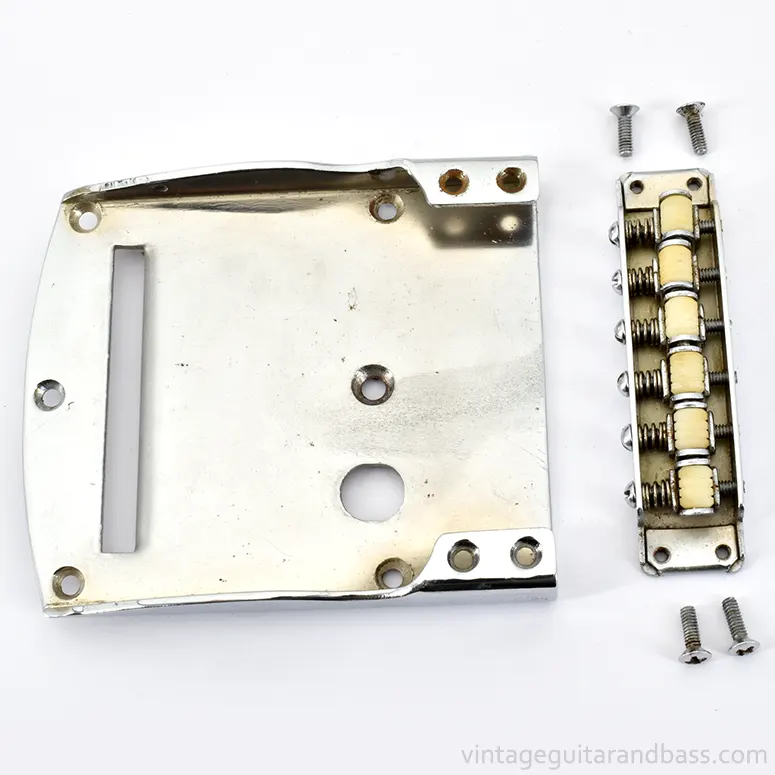
The baseplate with bridge removed. The four mounting bolts are 10mm oval crosshead pre-1967 JIS M3 (0.6mm pitch).
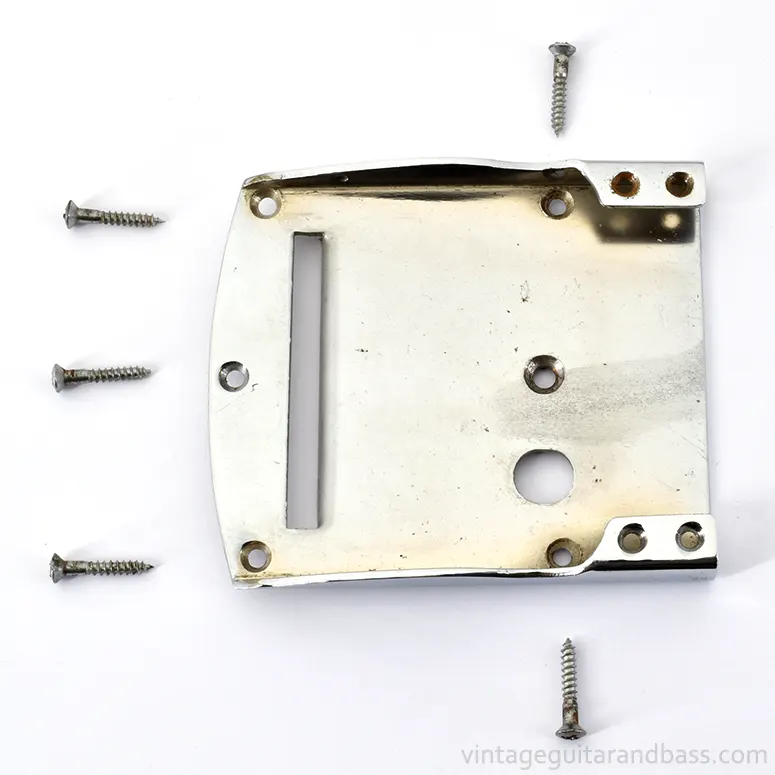
The baseplate is mounted to the body with five 20mm oval crosshead screws.
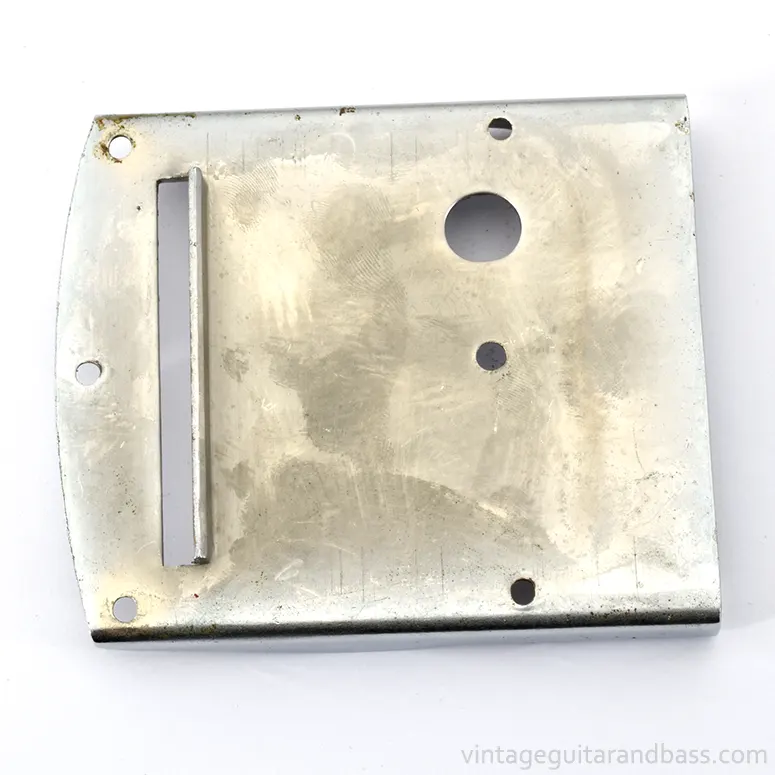
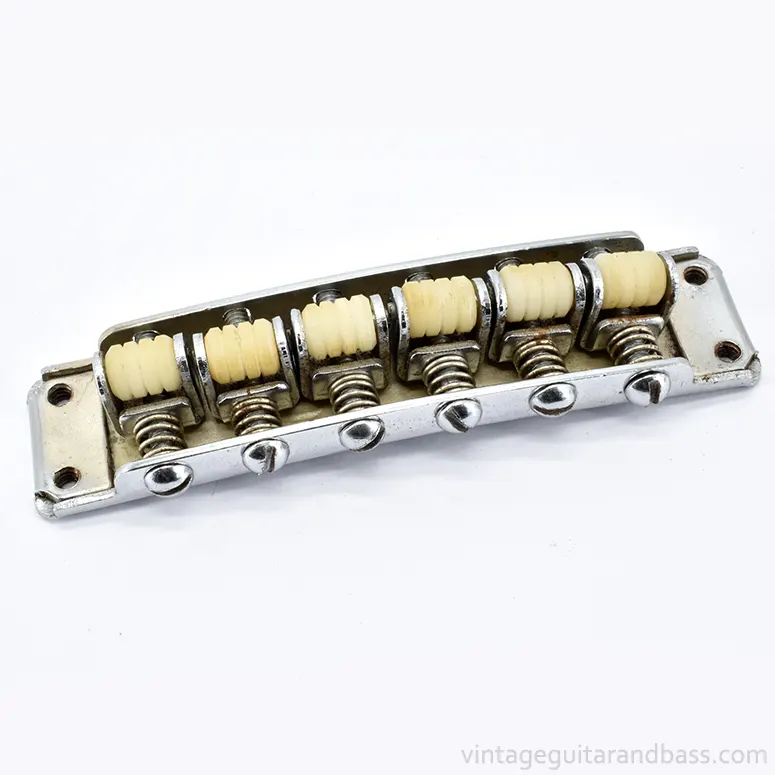
The bridge part of the tailpiece.

Disassembled bridge. The saddle bolts are 20mm round slotted head pre-1967 Japanese M3 (0.6mm pitch). Saddle dimensions are 9.0mm deep x 10.0mm wide x 10.6mm tall. The saddles sit on a thin translucent plastic strip plastic approx 57mm x 16mm. The design of this bridge has similarities (but also differences) to the typical floating bridge used on Matsumoku hollow bodies, the EA-250, for example.
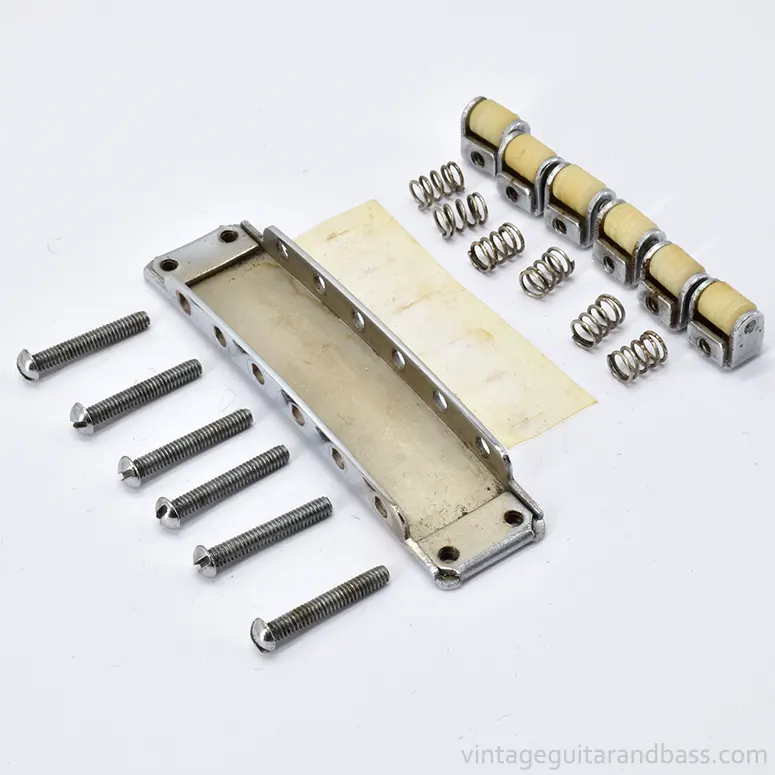
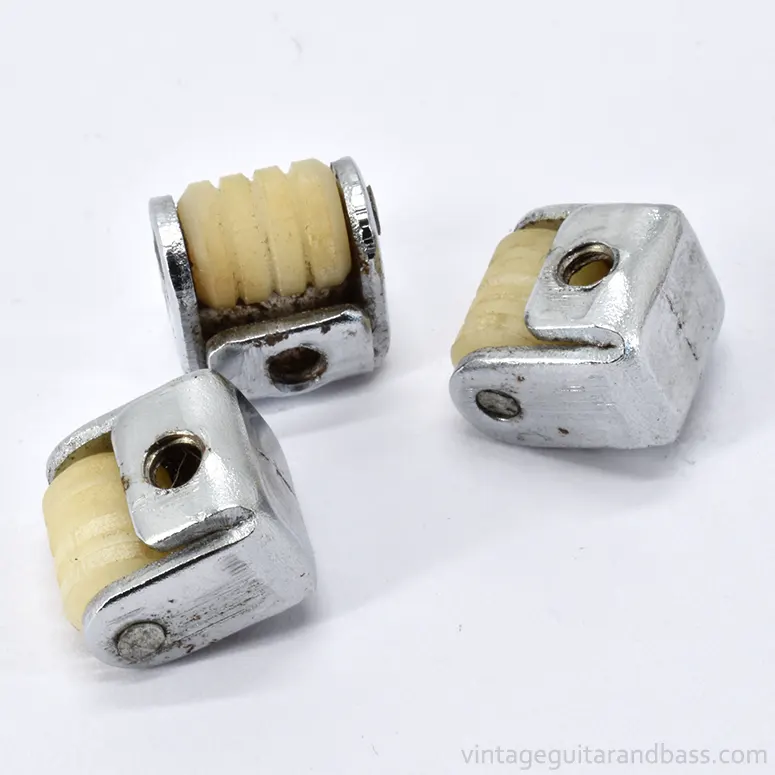
The saddles consist grooved plastic 'barrels' on a folded metal frame.
$35
$49
$50
$55
$59
$71
$75
$125
$149
$150
$225
£30
£40
£50